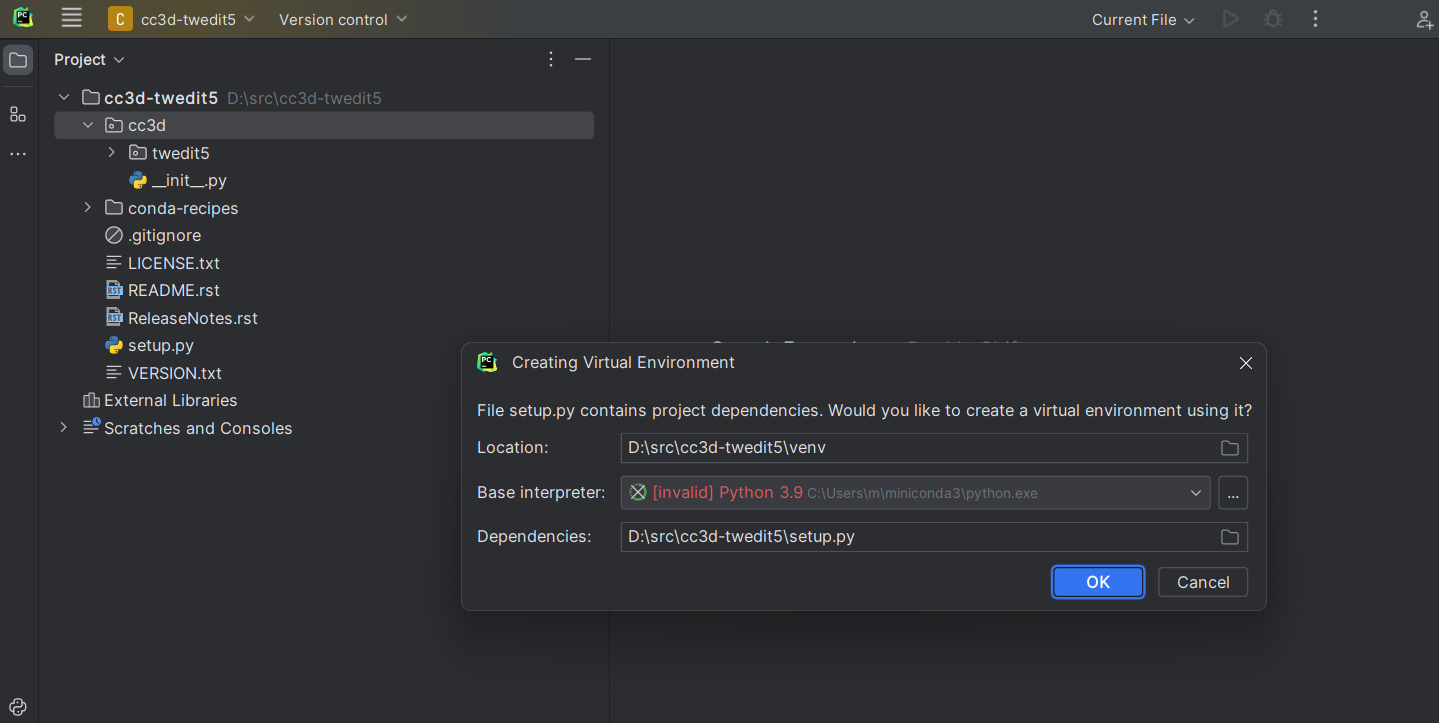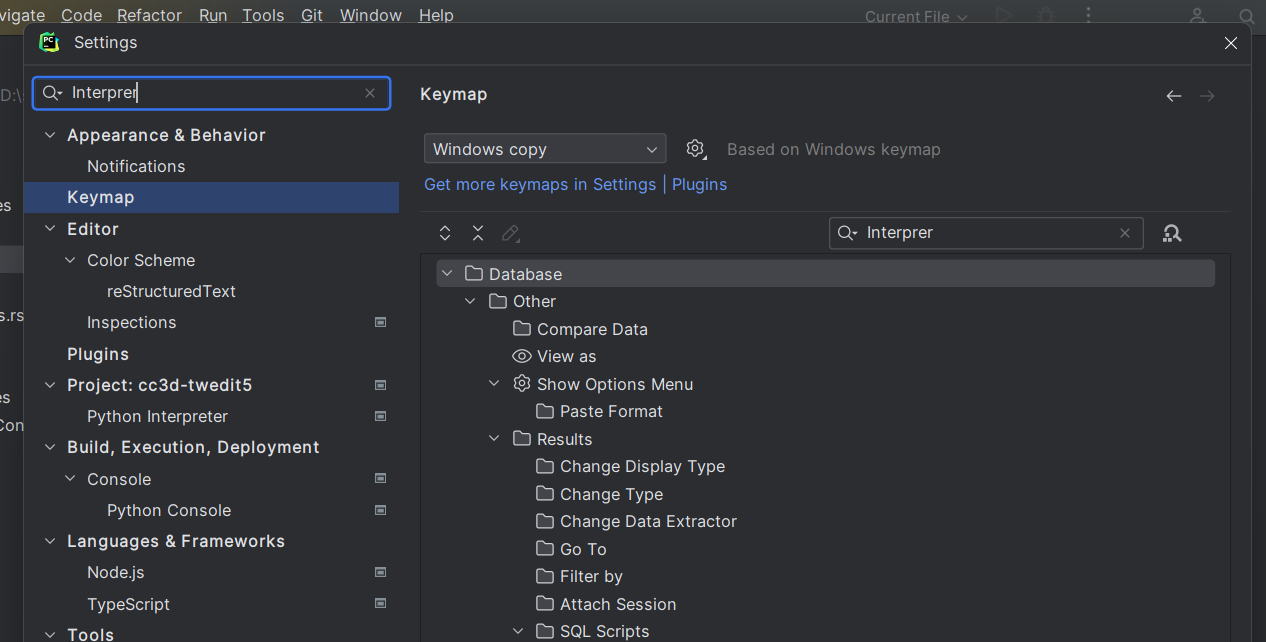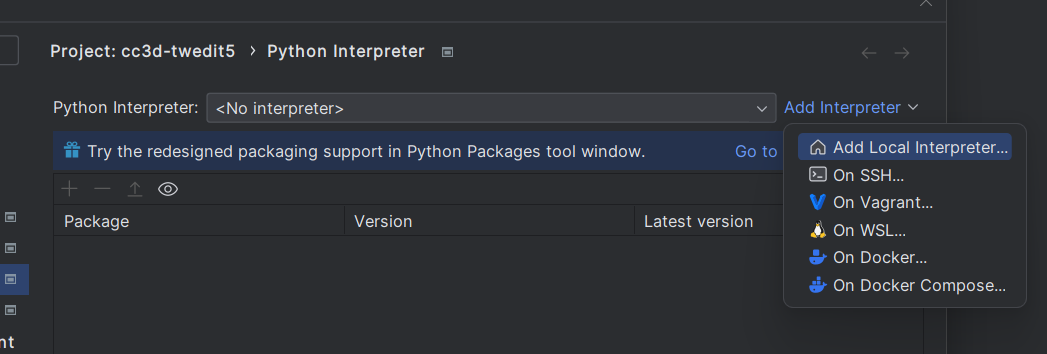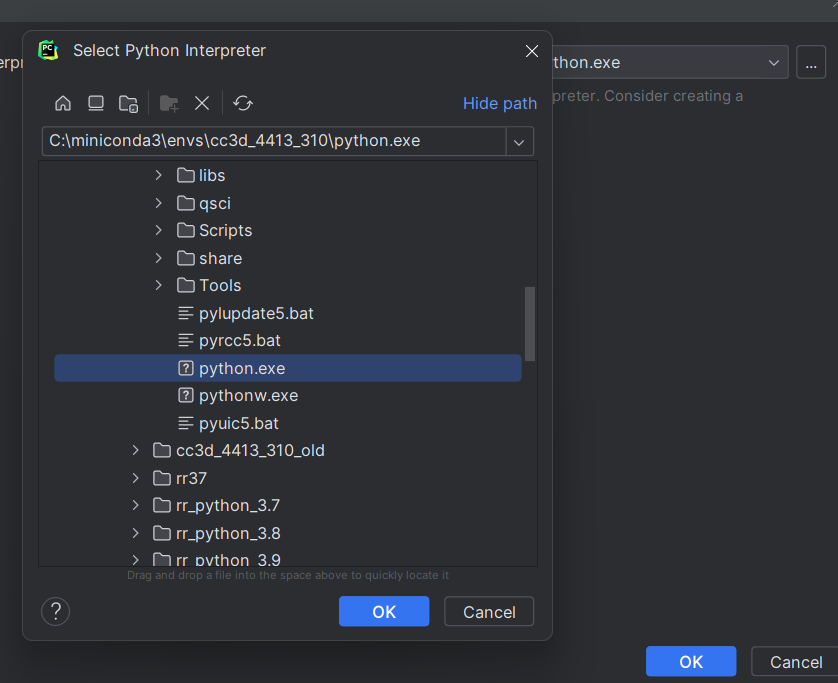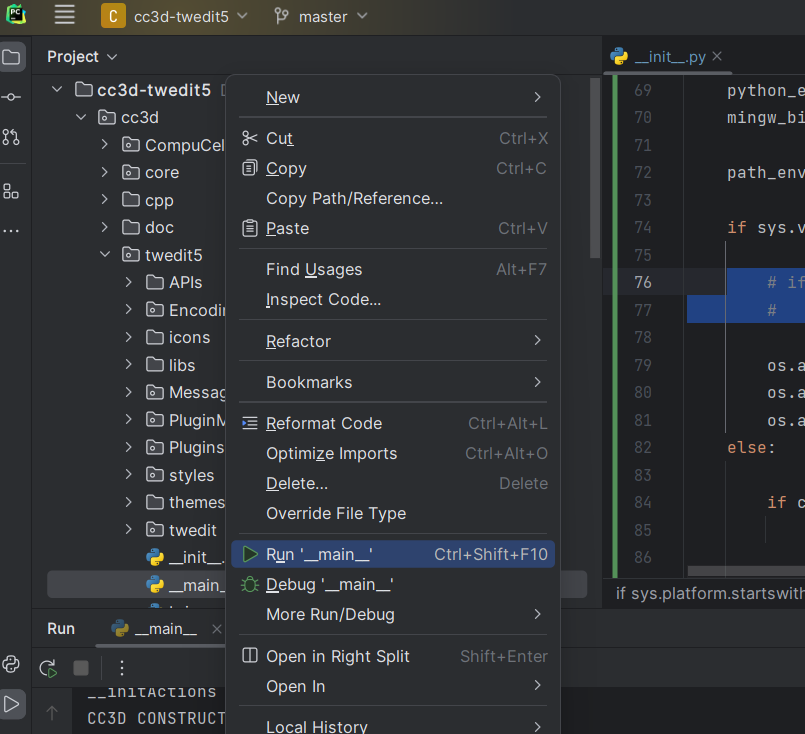Getting Started with CC3D GUI Code
Working on the GUI code for CC3D requires some knowledge about PyQt5, access to a decent Python IDE (e.g. PyCharm) and a bit of setup. In this section we will show you how to get started working on either Player of Twedit++ code.
First thing you will need to do is to fork Player or Twedit repository. To do that, log in to your github.com account and fork e.g. Twedit code - https://github.com/CompuCell3D/cc3d-twedit5.:
Once you forked the code, go ahead and clone it from your repository (not from CompuCell3D repository).
To clone repository you follow command pattern below:
cd d:\src\
git clone git@github.com:<your_github_name>/cc3d-twedit5.git
or if you want to clone Player
cd d:\src\
git clone git@github.com:<your_github_name>/cc3d-player5.git
The reason it is important that you first fork repository to your own account instead of cloning it directly from CompuC3ll3D account is that if you for you will be able to push changes to the forked version of Player or Twedit++ whereas if you cloned directly from our repository you will not be able to store your code edits on the github server.
Installing IDE
While there are many IDEs we recommend PyCharm Community Edition. This is an excellent Python tool that you can use free of charge. Please google the download link for for this software and install it on your machine. Make sure to use community Edition, not the professional one if you do not want to pay for the software
Running CompuCell3D User interface code in PyCharm
Warning
The following instructions are for Windows. If you are on OSX or Linux there should not be much of a difference except that when you copy directories you may us soft links and the layout of the Python environment is slightly different on OSX/Linux than it is on Windows. We will point out the differences later in the text.
As you may know by now, CompuCell3D is distributed in the form of conda packages. Typically, you would use a binary installer that under the hood installs distribution of Miniconda, then installs mamba (python package manager that os much faster than conda package manager) and then uses mamba to install CompuCell3D. Now, as a developer you will need to do those steps manually. First, let’s install conda - here is tha link and installation instructions:
https://docs.conda.io/projects/miniconda/en/latest/index.html
Once you install the latest version of Miniconda for your operating system you should install mamba into base conda environment:
conda install -c conda-forge mamba
Note, -c conda-forge points to conda-forge channel that is one of the most reliable repositories of conda packages.
Once mamba is installed you should create new conda environment for the latest version of CC3D. As of this writing, this version is 4.4.1.3. Hence we do the following:
conda create -n cc3d_4413_310 python=3.10
Next, we activate this environment:
conda activate cc3d_4413_310
and install latest version of CompuCell3D:
mamba install -c conda-forge -c compucell3d compucell3d=4.4.1
It may take few minutes for all packages to download. Notice, we are now sourcing our packages from two conda package repositories: conda-forge and compucell3d.
Once CompuCell3d is installed, verify that you can run Player:
python -m cc3d.player5
If this command works and the Player UI opens, try running one of the demo simulations to make sure everything works and if there are no errors, we should be ready for the next step - configuring your IDE so that you can run either Player or Twedit++ from PyCharm
Configuring IDE to run Twedit++
Even though we will show how to run Twedit++ using PyCharm, the steps for Player ara analogous.
First thing we need to do is to open cc3d-twedit5 repository in PyCharm:
If you see a prompt (dialog) to setup Python interpreter, choose Cancel
We will use different configuration dialog to configure Python Interpreter for cc3d-twedit5. Simply, got to File->Settings and the following configuration dialog will open up:
Type interpreter in the search bar above and click Python Interpreter option from the left panel of the popup dialog:
Click Add Interpreter (top right blue button on the dialog), choose “Add Local Interrpreter”
Choose “System Interpreter”
and navigate to the place where your newly created conda environment is):
In my case it was installed to c:\miniconda3\envs\cc3d_4413_310\python.exe
After this Click OK on all open dialogs and your newly-created interpreter will be added to the list of Python interpreters available to PyCharm
Finalizing the setup
To finalize the setup you need to do few other things:
Copy
__init__.pyandconfig.pyfromc:\miniconda3\envs\cc3d_4413_310\Lib\site-packages\cc3d
Note
If you are on OSX or Linux your cc3d package will be located in /Users/m/miniconda3/envs/cc3d_4412_310/lib/python3.10/site-packages/cc3d.
to cc3d folder inside the folder into which you cloned your cc3d-twedit5 repository:
Comment out line 76 and 77 in __init__.py
Copy the following directories: CompuCellSetup, core, cpp, doc from c:\miniconda3\envs\cc3d_4413_310\Lib\site-packages\cc3d to
cc3d folder inside the folder into which you cloned your cc3d-twedit5 repository:
Note
If you are on OSX or Linux instead of copying directories you may make soft-links from those directories in the conda environment to appropriate destination within your cloned repo folder
Finally, rename c:\miniconda3\envs\cc3d_4413_310\Lib\site-packages\cc3d\twedit5 to c:\miniconda3\envs\cc3d_4413_310\Lib\site-packages\cc3d\twedit5_1.
This last step is to make sure that when you run twedit5 from PyCharm it will be the code from your repository that is run, and not the code that got installed with CompuCell3D.
Now you should run the Twedit++ (cc3d.twedit5) from your PyCharm:
In the left panel of PyCharm “unfold” folders until you reach cc3d-twedit5\cc3d\twedit5\__main__.py
Right-click on this file and choose, “Run” (or “Debug” if you want to start debugging session - somthing we will cover next):
Twedit++ should open up:
At this point you are ready to do UI development using PyCharm

